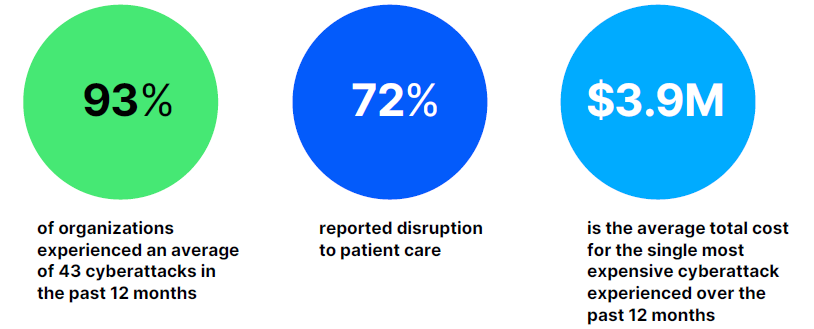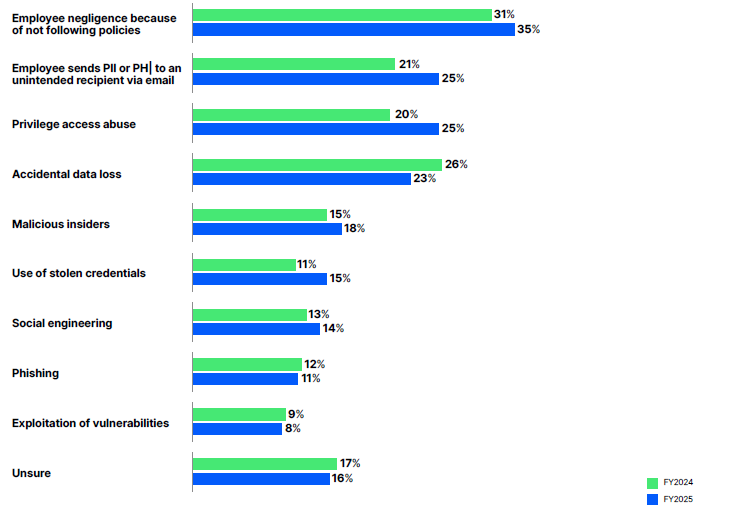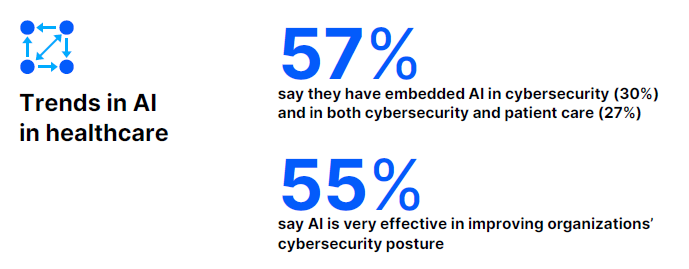
Cyber Insecurity in Healthcare: 2025 Findings and What It Means for Patient Safety
Cybersecurity Is The New Standard Of Patient Care – Cyber Resilience Has Become A Core Component Of Quality Care
Cyber Insecurity in Healthcare: 2025 Findings and What It Means for Patient Safety
TL;DR: Healthcare organizations continue to face escalating cyber risks — 93% were attacked in the past year, averaging 43 incidents. Attacks aren’t just costly ($3.9M average per major breach); they’re deadly. From disrupted surgeries to delayed care, patient outcomes suffer. It’s time for healthcare leaders to treat cybersecurity as clinical safety.
![]()
Cybersecurity in healthcare has shifted from a technical challenge to a frontline issue of patient safety and operational survival. The 2025 Ponemon Institute and Proofpoint “The 2025 Study
on Cyber Insecurity in Healthcare” report makes one thing clear: cyberattacks are now a defining element of healthcare delivery risk. Nearly every organization surveyed — 93% — endured at least one attack in the last 12 months, with an average of 43 incidents per organization. This constant barrage of digital threats doesn’t just strain IT teams; it compromises every facet of care delivery, from data access to diagnostic speed. The cost of failure is measured not just in dollars, but in lives and lost trust.
Healthcare is uniquely vulnerable because of its interconnected systems, decentralized data, and mission-critical workflows. The report shows that attacks increasingly disrupt operations at the bedside, delaying treatments and endangering patients. While some metrics improved slightly from 2024, the impact on human life worsened — underscoring that cybersecurity isn’t just a compliance checkbox, but a clinical necessity.
Key Findings:
- 72% of organizations reported disruptions to patient care due to cyber incidents.
- 54% experienced poor outcomes such as increased complications during medical procedures.
- 29% reported increased mortality rates linked to cyber events.
- The average cost of the most expensive attack: $3.9M.
- Ransomware payments now average $1.2M, despite fewer organizations paying.
Healthcare’s growing digital dependency has amplified its fragility. Each ransomware strain, phishing link, or compromised credential becomes a potential catalyst for tragedy. These findings don’t just demand stronger defenses — they demand a shift in mindset, where security is viewed as inseparable from patient safety.

(Source: 2025 Ponemon Institute and Proofpoint “The 2025 Study on Cyber Insecurity in Healthcare”)
 Top Cyber Threats to Healthcare in 2025
Top Cyber Threats to Healthcare in 2025
Cybercriminals have refined their playbook, targeting healthcare’s weakest links — human behavior, complex supply chains, and legacy systems. The 2025 data shows a relentless escalation in sophistication, with attackers moving faster and exploiting emerging technologies like AI to scale operations. The threats facing hospitals and clinics aren’t abstract anymore; they’re real-world events disrupting surgeries, diagnostics, and electronic health record access.
As the report outlines, the top four attack categories remain consistent — cloud compromises, ransomware, supply chain intrusions, and business email compromise — but each now carries greater consequences. These aren’t one-off events; they’re systematic stress tests on the resilience of healthcare infrastructure.
- Cloud/Account Compromises: 72% of organizations were hit, averaging 21 incidents in two years. Each one exposes sensitive PHI and interrupts care continuity.
- Ransomware: 61% experienced attacks. While payment rates dropped to 33%, ransom demands rose. Even brief downtime translates to delayed care and longer hospital stays.
- Supply Chain Attacks: 44% reported breaches via vendors or partners. Despite fewer cases, 87% of those led to patient care delays, and nearly a third resulted in increased mortality — making supply chain security an existential issue.
- Business Email Compromise (BEC): 62% faced impersonation or fraud attempts. These seemingly small attacks often trigger major operational chaos — from scheduling errors to diagnostic delays.
Healthcare organizations must treat these threats not as isolated incidents but as symptoms of a larger systemic vulnerability. True resilience means integrating security into every vendor, device, and clinician workflow. The new battlefield isn’t at the firewall — it’s everywhere patient data lives.

(Cyberattacks Experienced – Source: 2025 Ponemon Institute and Proofpoint “The 2025 Study on Cyber Insecurity in Healthcare”)
 The Financial Toll: Cyber Costs Continue to Climb
The Financial Toll: Cyber Costs Continue to Climb
The financial implications of healthcare cyberattacks remain staggering, even as some cost metrics show minor declines. Behind every dollar figure lies operational downtime, reputational damage, and lost clinical hours that directly impact patient outcomes. The 2025 report underscores a painful truth: while healthcare budgets tighten, the costs of cyber inaction continue to rise. Every breach pulls funds away from frontline care, technology upgrades, and staffing — effectively taxing the healthcare system itself.
Even small disruptions cascade into massive losses. From system shutdowns to manual charting, recovery often takes weeks. When you multiply that across multiple facilities, the financial drag becomes unsustainable.
- System availability losses: $1.21M
- User downtime/productivity loss: $858K
- Remediation/support efforts: $507K (down 28.6% from 2024)
- Data loss and asset damage: $625K
While the averages dipped slightly year over year, the underlying problem persists: healthcare remains one of the least financially resilient sectors when attacked. The issue isn’t only cost — it’s continuity. The ability to maintain operations during a cyber incident determines whether a facility saves lives or loses them. The data is clear: cybersecurity investment isn’t overhead; it’s an insurance policy against operational collapse.

(Link Between Cyber Safety and Patient Safety – Source: 2025 Ponemon Institute and Proofpoint “The 2025 Study on Cyber Insecurity in Healthcare”)
 The Human Element: Employee Negligence Still Leads to Data Loss
The Human Element: Employee Negligence Still Leads to Data Loss
Technology often gets the blame, but humans remain healthcare’s biggest security risk — and its most underutilized defense. The Proofpoint/Ponemon study revealed that 96% of organizations suffered data loss in the past two years, with employee negligence or poor security practices leading most of them. From misdirected emails to weak passwords, it’s the small oversights that open the biggest doors. Healthcare’s fast-paced, high-stress environment often leaves little room for cybersecurity mindfulness, yet the consequences of a single click can be catastrophic.
The report exposes a sobering reality: 70% of organizations believe their employees don’t understand how to handle sensitive data. This lack of awareness directly undermines even the most advanced technical defenses. As healthcare embraces telehealth and remote systems, the attack surface only grows. The solution isn’t just more tools — it’s better human strategy.
- 35% of breaches stem from employees not following policies.
- 25% come from privilege misuse or abuse.
- 25% result from simple email errors sending PHI or PII to the wrong recipient.
The healthcare workforce must become the first line of defense, not the weakest link. Creating a culture of security requires continuous education, real-world simulations, and leadership accountability. When every staff member understands their role in protecting patient data, cybersecurity stops being an IT function and becomes a shared mission of care.

(Bad Cyber Practices – Source: 2025 Ponemon Institute and Proofpoint “The 2025 Study on Cyber Insecurity in Healthcare”)
 AI in Healthcare Cybersecurity: Progress and Peril
AI in Healthcare Cybersecurity: Progress and Peril
AI is transforming healthcare — and simultaneously redefining its risk landscape. The 2025 report shows that while artificial intelligence is helping detect threats and enhance care delivery, it’s also creating new attack surfaces and ethical dilemmas. As healthcare systems rely more heavily on machine learning for decision-making and diagnostics, attackers are exploring ways to manipulate algorithms, corrupt training data, or extract sensitive information from AI models themselves.
The promise is real: AI-driven tools can spot anomalies faster than any human analyst, automate repetitive tasks, and predict attacks before they happen. But the peril is equally significant — unguarded AI can expose clinical data or amplify bias if not properly monitored. For healthcare leaders, adopting AI without strong governance is like installing a high-tech lock but leaving the door open.
- 57% have integrated AI into cybersecurity or clinical workflows.
- 55% report improved security posture through AI adoption.
- 60% admit difficulty protecting data within AI systems.
- 87% plan to expand AI-based data protection and DLP tools.
AI’s dual nature makes it both a defense mechanism and a potential liability. To harness its benefits safely, healthcare organizations must treat AI governance as seriously as clinical governance — with policies, oversight, and accountability. When properly deployed, AI can become healthcare’s strongest security ally, helping clinicians and IT teams stay ahead of evolving threats.

(AI Cybersecurity – Source: 2025 Ponemon Institute and Proofpoint “The 2025 Study on Cyber Insecurity in Healthcare”)
 How CinchOps Can Help
How CinchOps Can Help
Healthcare’s cybersecurity crisis is no longer about compliance or best practices — it’s about survival. Every hospital, clinic, and healthcare network now faces the same stark reality: the digital systems that save lives can also endanger them when unprotected. CinchOps helps healthcare organizations reclaim control, reduce exposure, and align cybersecurity strategy directly with clinical outcomes. Our approach isn’t built on buzzwords — it’s built on outcomes, uptime, and trust.
Whether you’re a small clinic or a multi-site network, CinchOps tailors solutions that protect both your technology and your mission of care.
Here’s how CinchOps supports healthcare organizations:
- 24/7 Managed IT Support – Continuous monitoring and rapid response to threats before they impact patient care
- Cloud Security Solutions – Protect your cloud-based clinical applications and collaboration tools from compromise
- Multi-Factor Authentication Implementation – Add critical layers of security to prevent unauthorized access
- Security Awareness Training – Reduce employee negligence through comprehensive, healthcare-specific training programs
- Network Security and SD-WAN – Secure network infrastructure that supports reliable clinical operations
- Email Security and Anti-Phishing Protection – Block ransomware and BEC attacks before they reach your users
- Patch and Vulnerability Management – Stay ahead of threats with proactive security updates
- Compliance Support – Maintain HIPAA compliance while implementing strong security controls
- Incident Response Planning – Prepare for and respond to cyberattacks to minimize patient care disruption
- Backup and Disaster Recovery – Ensure business continuity and rapid recovery from ransomware attacks
Don’t wait for a cyberattack to disrupt your operations and endanger patient safety. Contact CinchOps today for a comprehensive cybersecurity assessment and learn how our managed IT support services can protect your healthcare organization from evolving cyber threats.
![]()
 Discover More
Discover More 
Discover more about our enterprise-grade and business protecting cybersecurity services: CinchOps Cybersecurity
Discover related topics: Healthcare Organizations Excel at Prevention but Struggle with Cybersecurity Response Times
For Additional Information on this topic: 72% of Healthcare Orgs Report Disruption to Patient Care Due to Cyberattacks
![]()
FREE CYBERSECURITY ASSESSMENT



